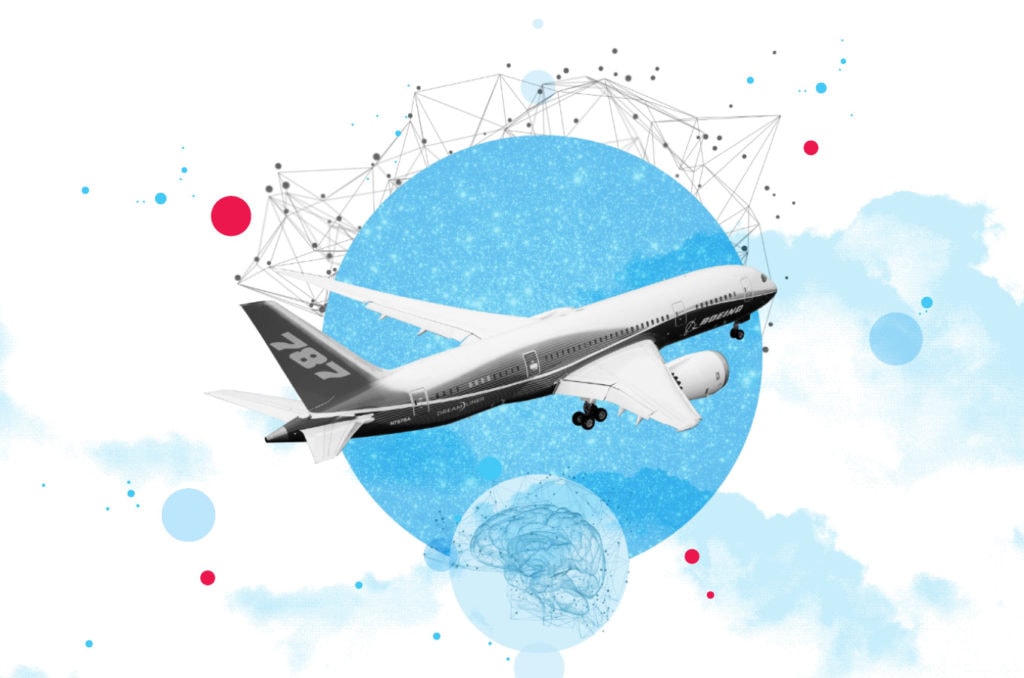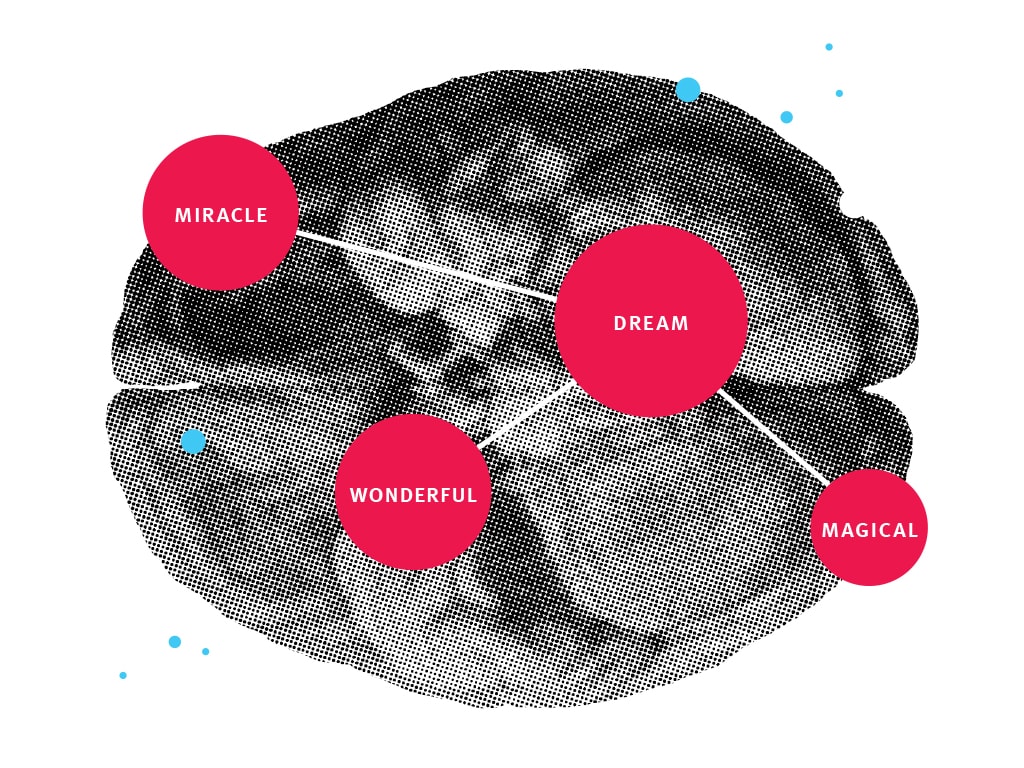What Passengers Want: Boeing Delves Deep Into Pax Psychology
Share

APEX Insight: Boeing’s Sky Interior philosophy marks a paradigm shift in the airframer’s approach to building planes with passengers at the forefront of design and research. But finding out what passengers want is more complicated than just asking.
Boeing has built all sorts of airplanes over the years: Airplanes for airmail, airplanes for war and even airplanes for airlines. Now the 100-year-old aircraft manufacturer is building airplanes for people.
“We made the decision to do something that was pretty much unprecedented, to go to the flying public, our customers’ customers,” says Blake Emery, Boeing Commercial Airplanes’ director of Differentiation Strategy, on the company’s ideological shift in the 1990s during work on the Sonic Cruiser, and later the Dreamliner. The idea didn’t immediately fly with management, though. “They viewed it as, the people who made the purchasing decisions at airlines are the ones you really need to please, not the passengers,” he adds.
“We made the decision to do something that was pretty much unprecedented, to go to the flying public, our customers’ customers.” €” Blake Emery, Boeing
The Sonic Cruiser never took off, but its cool factor – cranked rocket-esque wings, vertical fins and subsonic speeds – left a lasting imprint on the flying public and Boeing executives. So, the design brief for the 787 included an important detail: Passengers should say “wow” as they step inside the aircraft. “We actually used that three-letter word,” Emery says.
To build an architecture for wows, you have to get friendly with the flying public, and it’s not as simple as just asking passengers what they want. “If you do a typical questionnaire and focus group, you’re not going to get much that you don’t already know,” Emery says. Passengers want more legroom, more overhead storage, more space – most people know that. “Space is so valuable and so precious, in a sense, that isn’t going to change, because the model is you can have all the space you want, you’ve just got to pay for it,” he explains.
What passengers want, what passengers can have and what passengers do can be mutually exclusive. “Passengers don’t say, ‘I’m going to buy the cheapest ticket,'” says Kent Craver, Boeing’s regional director of Cabin Experience and Revenue Analysis. “They say: ‘I want a wide seat, I want more legroom, I want more channels of in-flight entertainment and I want better food – but what they do is buy the cheapest ticket.” With little wiggle room in economy, Boeing had to dig deep in its research.

Ideals and Ideologies
In an idealized design session, participants are given the chance to put their wants to the test. In the early 2000s, Boeing turned to three audiences – architects and artists, airline brand managers, and young professionals – to undertake the task of designing their version of a perfect aircraft interior.
The exercise stems from a stunt pulled by Bell Labs’ vice-president back in 1951. Managers were summoned to an unexpected meeting where he urgently announced: “Gentlemen, the telephone system of the United States was destroyed last night.” Stunned, managers were ordered to rebuild the system from scratch. “The guy I learned idealized design from was actually present in the room at the time it happened,” Emery shares. Bell Labs’ impromptu task- force rapidly brainstormed radical ideas, anticipating every modern phone feature short of cameras and the Internet.
Prior to one of Boeing’s idealized design sessions, Emery’s team had been exploring ways to enhance the boxy jetway tunnel, so passengers would be happier boarding their airplanes. But an architect’s idealized design brought their work to a divine halt when he pointed out a trick of compression and release employed in religious structures, such as the Taj Mahal or St. Peter’s Basilica. Typically, church entryways have low ceilings, narrow confinements and dimly lit interiors. But as worshippers cross from the entrance to the main hall, soaring arches and vaulted ceilings extravagantly open upward, heralding that you are now in another world, you are in the house of God.
The technique, to a lesser degree, has been adapted to high-end hotel architecture. “When we heard this architect in this idealized design session, we thought, ‘Well, you know, we don’t have to change the jetway,'” Emery says. “The jetway sucks, but let’s use it to our advantage … and let people have a psychological release as they enter the airplane.” The revelation allowed Boeing to focus on enhancing the aircraft entryway instead.
“To create something totally new, you have to start over with a clean sheet of paper.” €” P.J. Wilcynski, Boeing
Idealized airplanes may never actually fly, but they point Boeing’s designers in profound directions and help to leapfrog over current pain points. “You can’t just look at what’s wrong and fix it, because then you’re stuck in the past,” says P.J. Wilcynski, associate technical fellow and Payloads chief architect for Boeing. “To create something totally new, you have to start over with a clean sheet of paper.”
 The Reptilian Brain
The Reptilian Brain
Archetype discovery sessions – a highly guarded proprietary method used by Boeing – take passenger research a step deeper. Adapting methods developed by Clotaire Rapaille – a French social anthropologist and marketing consultant who has gained notoriety for his contributions to the signature look of Chrysler’s PT Cruiser and Folgers’ emphasis on the smell of coffee – the sessions aim to uncover universal unarticulated needs.
Based on a triune theory, which defines three distinct parts of the brain – the cortex, limbic and reptilian – Rapaille’s sessions begin with a purge of the cortex, the part of the brain that typically aims to impress with intellect but can obstruct deep truths. The second part of the session engages the limbic, or emotional brain, by asking participants to tell a story. By the final stage, disoriented participants are asked to describe the very first time they experienced whatever Rapaille’s team is trying to understand – a car, a coffee, etc.
“There are underlying themes that resonate throughout everyone’s stories, and those tend to be deeper, unarticulated needs.” €” Blake Emery, Boeing
Boeing’s archetype discovery sessions lead groups of roughly 30 people through a series of curious activities. Participating without knowledge that Boeing is overseeing the research, “naïve subjects” are asked to make collages out of images, tell stories and recall their very first flight. “There are underlying themes that resonate throughout everyone’s stories, and those tend to be deeper, unarticulated needs,” Emery says.
Terms frequently used to describe first flights include “magical,” “miracle” and “wonderful” – very different from the words people use to describe their most recent flights in economy: “coffin” and “bored” being among them. In India, Boeing encountered difficulty finding enough flyers to survey. Up to 50 percent of participants had never taken a flight before, and the word “dream” cropped up the most often in descriptions of what people thought it would be like to fly – a validation of the 787’s name, which by that time had already been chosen.

A Window Into Sky Philosophy
After gathering qualitative research from archetype discovery and idealized design sessions, Emery was in search of someone to help him translate his research into cabin architecture, and Wilcynski was up for the task. Several findings pointed to the need for larger windows, and fortuitously, the Dreamliner’s lightweight, carbon-fiber fuselage allowed them to push window boundaries.
“We pretty much had the OK to make windows bigger,” Emery says. “And so, if we knew we could make the windows bigger, we needed to get them right. We needed to get them in the right place and the right size and everything.” To test windows, they built a 767 mock-up inside a big tent. “We called it the big top,” Wilcynski jokes, but the center quickly became known as the PERC, or Passenger Experience Research Center.
Starting in 2002, guests finishing up the Boeing Tour were beckoned to the PERC tent, where they would be asked questions about their experience in the mock-up. (The PERC is now a permanent fixture at the Future of Flight Aviation Center in Paine Field-Lake Stickney, Washington.) Each time, only windows would be modified, gradually climbing higher on the sidewall, shape-shifting from ovals to triangles to teardrops, and even featuring a mullion. But the questions – none of them about windows – remained the same. Eventually, the teams found a sweet spot – a height and shape that was not only subconsciously preferred, but that enhanced perceptions of the experience as well.
At 19 inches tall and 11 inches wide, the windows on the Dreamliner are the largest of any commercial jet, and with a wider interior fuselage, the 777X’s windows will seem even larger. But adapting the Boeing Sky Interior (BSI) to some aircraft provided more challenges than others. On aircraft like the 737, for example, where it’s not structurally or economically feasible to enlarge windows, Boeing adapts its philosophy. Sculpted sidewalls were designed to enhance the window’s inner reveal, and at work with the other features of the BSI, the effect makes them seem larger.
In 2011, the airframer had a chance to confirm the efficacy of the philosophy when surveys run on two Norwegian Air Shuttle 737 fleets, one with the BSI and one without, revealed that despite having the same amount of space, passengers felt they had more on the BSI-outfitted aircraft.
 Build Something Better
Build Something Better
“On the 777X, we’re bringing things full circle,” Wilcynski says. “We continued with the passenger research that started on the Sonic Cruiser, but we also reintroduced, in a more modest fashion, working together with the airline customers.” Having tailored the BSI to different aircraft, Wilcynski’s design teams realized they could create multiple options for one aircraft, offering airlines more selection without compromising the experience. “Custom cabins without customization” is how he describes it.
But, what do passengers want? The answer, perhaps most simply, is passengers want to fly. Boeing asks respondents very similar questions in PERC as it asks flyers at airport intercepts. One noteworthy detail stands out above the rest. Regardless of the question, responses for every aspect of the passenger experience rate higher when asked in flight. “I’m not sure we’ve ever measured anything in PERC that came out higher on the ground than in the air,” Kent Craver says.
“What Passengers Want” was originally published in the October/November issue of APEX Experience magazine.


